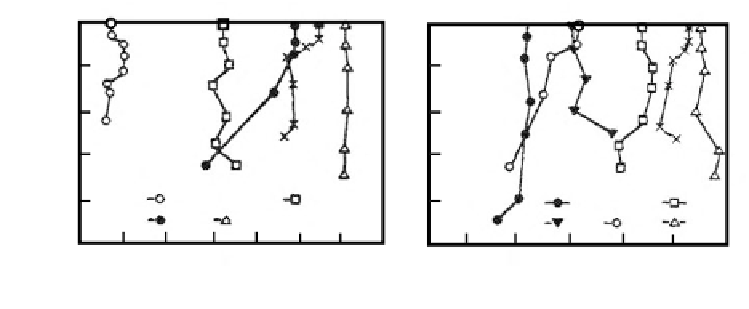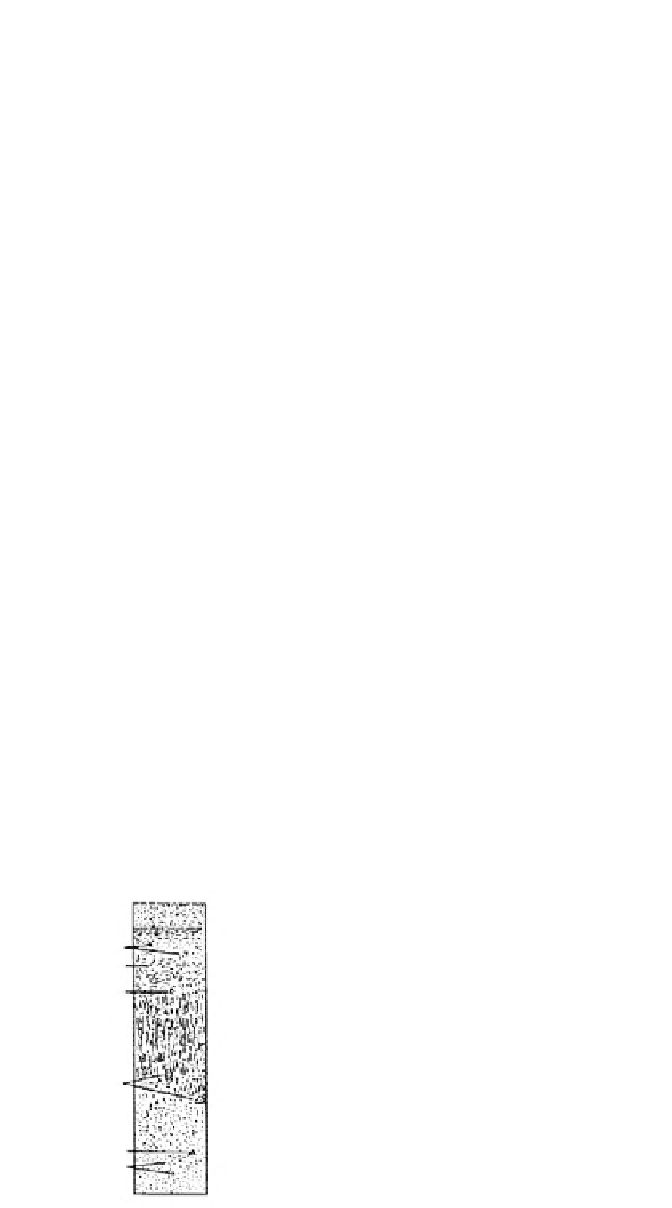Agriculture Reference
In-Depth Information
0
50
100
150
200
-X-1 -x-X-3 -G-1
-X-2 -x-X-3 -G-1
-L-2
-L-1
-L-1
-L-2
-G-2
250
0 20 40 60 80 100 120 140
CaCO
3
(
g kg
-1
)
0 50 100 150 200 250 300
Clay (
g kg
-1
)
Figure 10.10
Distribution of CaCO
3
and clay contents in Irragric Anthrosols. X-l, X-2, X-3, G-l, G-2, L-l, and
L-2 are Irragric Anthrosols sampled from Xinjiang, Gansu, and Ningxia, which were described
in detail by Shi and Gong (1995). (From Gong et al., 1999. With permission.)
Cumulic Epipedon
The cumulic epipedon is an anthropic surface horizon formed by long-term intensive cultivation
and frequent irrigation, application of large amounts of manure, earthy compost, pond muds, etc.
(Figure 10.11). A cumulic epipedon meets the following requirements:
¤a thickness of 50 cm or more
¤a airly uniform color, texture, structure, consistency, etc. throughout the whole epipedon, and the
textures of the adjacent subhorizons located in the same or adjacent positions of the triangular
texture table stipulated by USDA
¤ the weighted average of organic carbon being 4.5 g kg
-1
or more within 50 cm of the soil surface
¤ besides the soil particle composition similar to that in the original soil, which is adjacent, inÞuenced
by the sources of cumulic materials, having one of the following characteristics: the characteristics
of hydromorphic soils and half-hydromorphic soils: residual or recently formed rusty spots, rusty
streaks, gley spots, or additional aquatic animal residuals such as shells of conches and shellÝsh
(mud-cumulic features); or some diagnostic horizons and characteristics similar to the adjacent
automorphic soils (earth-cumulic features)
¤having coal cinders, charcoals, brick or tile fragments, ceramic pieces, and other artiÝcial intrusions
Cultivated
horizon
Plowpan
Overburden
layer
Anthro mellowed soil horizon
Intrusive bodies
Wormcasts
Wormholes
Old anthro mellowed soil horizon
Ancient cultivated horizon
Agric horizon
Burrows holes
Original soil profile
Calic horizon
Snail
Lime concretion
C horizon
Figure 10.11
Sketch of the profile of typical Earth-cumuli-orthic Anthrosols. (From Gong et al., 1999. With
permission.)

























